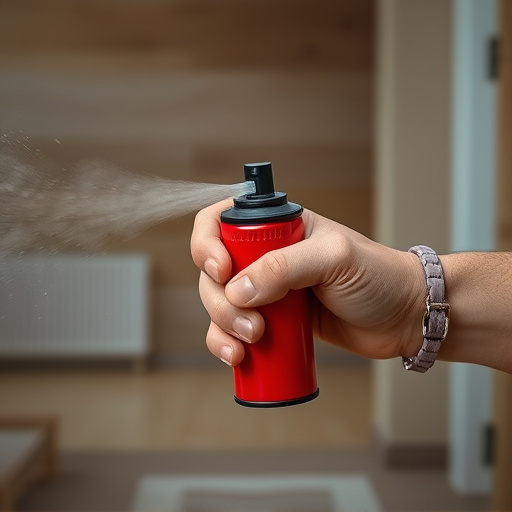"When to Use Pepper Spray Safely emphasizes responsible handling of this powerful non-lethal agent. With its active ingredient capsaicin causing temporary blindness and respiratory distress, misuse poses risks. Law enforcement officers should undergo comprehensive training in deployment protocols, de-escalation tactics, and protective gear to ensure safe use as a last resort against immediate threats during riots. Strict storage practices and knowledge of wind conditions further mitigate potential harm, promoting a balanced and safe crowd control strategy."
In the realm of public safety, managing crowds during riots poses unique challenges. One tool that has gained prominence is inflammatory spray, or pepper spray, a chemical agent used for riot control. This article delves into the intricacies of understanding and deploying pepper spray effectively. We explore its composition, the conditions under which it should be used, and crucial safe handling practices to ensure both officer and civilian safety during these high-pressure situations, focusing on when to use pepper spray safely.
- Understanding Pepper Spray: Its Composition and Effects
- When is it Appropriate to Use Pepper Spray for Riot Control?
- Safe Handling Practices for Pepper Spray During Riots
Understanding Pepper Spray: Its Composition and Effects
Pepper spray, an inflammatory spray designed for riot control and self-defense, is a complex chemical compound that serves as a non-lethal agent to disrupt and disperse crowds. Its primary active ingredient is capsaicin, the same compound responsible for the heat sensation in chili peppers. This chemical irritates the eyes, nose, and respiratory system, leading to temporary blindness, coughing, and difficulty breathing. The spray’s composition also includes various additives like propellants and preservatives, ensuring its effectiveness over a specified range.
When used safely and appropriately, pepper spray can be an effective tool for law enforcement and individuals facing dangerous situations. It’s crucial to understand the spray’s limitations and potential risks, such as accidental deployment or misuse, which can lead to harm. Therefore, training and proper handling are essential, including learning when and how to use it responsibly, ensuring safety for both the user and bystanders.
When is it Appropriate to Use Pepper Spray for Riot Control?
When is it appropriate to deploy pepper spray during riot control? The decision to use this chemical agent should be made with extreme caution and only as a last resort when other de-escalation tactics have failed or are not feasible. Pepper spray, or oleoresin capsicum (OC) spray, is effective in temporarily incapacitating individuals by irritating the eyes, nose, and respiratory system. It can help disrupt large crowds and provide crucial time for law enforcement to regain control of a situation.
Safe use requires adherence to strict protocols. Training is essential to ensure officers understand the spray’s impact, range, and safety measures. Proper ventilation is critical when deploying pepper spray outdoors to minimize its concentration in the air. Targeting specific individuals among a crowd, aiming for the face and eyes, and using only the minimum amount necessary are key practices to ensure public safety and prevent excessive force.
Safe Handling Practices for Pepper Spray During Riots
When using pepper spray during riots, it’s crucial to prioritize safe handling practices to ensure effectiveness and minimize risks. Law enforcement officers should receive thorough training on proper usage, including understanding the range and wind conditions. Pepper spray should only be deployed when necessary, as a last resort, to control violent or aggressive behavior that poses an immediate threat. Officers must be equipped with protective gear, such as gloves and eye protection, to prevent accidental exposure and potential injuries.
Safe handling also involves responsible storage and maintenance of the spray. It’s essential to keep the canisters in secure locations, away from unauthorized access, and ensure they remain sealed until use. Regular inspection and proper disposal procedures should be followed to maintain the integrity of the product. Additionally, officers should be aware of de-escalation techniques and alternative crowd control methods to avoid unnecessary deployment of pepper spray, promoting a balanced and safe response during riot situations.
Pepper spray, when used appropriately and safely, can be an effective tool for riot control. Understanding its composition, effects, and safe handling practices is crucial in mitigating risks and ensuring public safety during tumultuous situations. By adhering to guidelines and employing it only when necessary, law enforcement agencies can leverage the benefits of pepper spray while minimizing potential harm. When to use pepper spray safely remains a critical consideration in maintaining order without causing undue distress.
